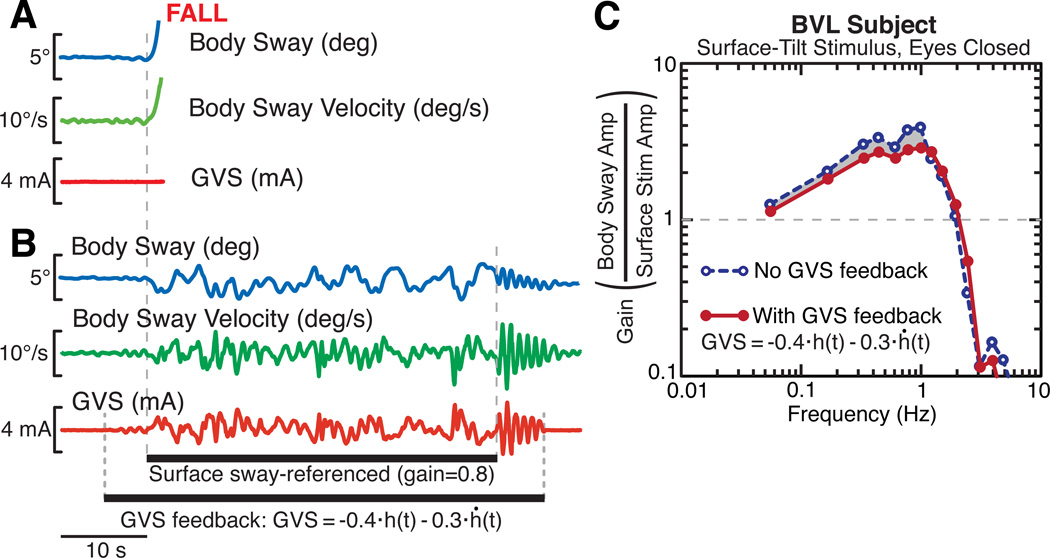Figure 4.
Effects of GVS feedback to restore vestibular contribution to balance in a vestibular loss subject. A. The subject (eyes-closed) fell quickly following onset of surface sway-referencing (sway-reference gain = 0.8). B. GVS feedback restored BVL subject’s ability to maintain stance on a partially sway-referenced surface. C. The subject’s FRFs gain curves from sway evoked by pseudorandom SS stimuli (2° peak-to-peak) with no GVS (blue dashed) or with GVS feedback (red) using an inverse-GVS filter. GVS feedback partially restored the vestibular contribution to balance, causing decreased reliance on proprioceptive cues, which resulted in the subject being less sensitive to the SS stimulus (i.e., lower gains).

